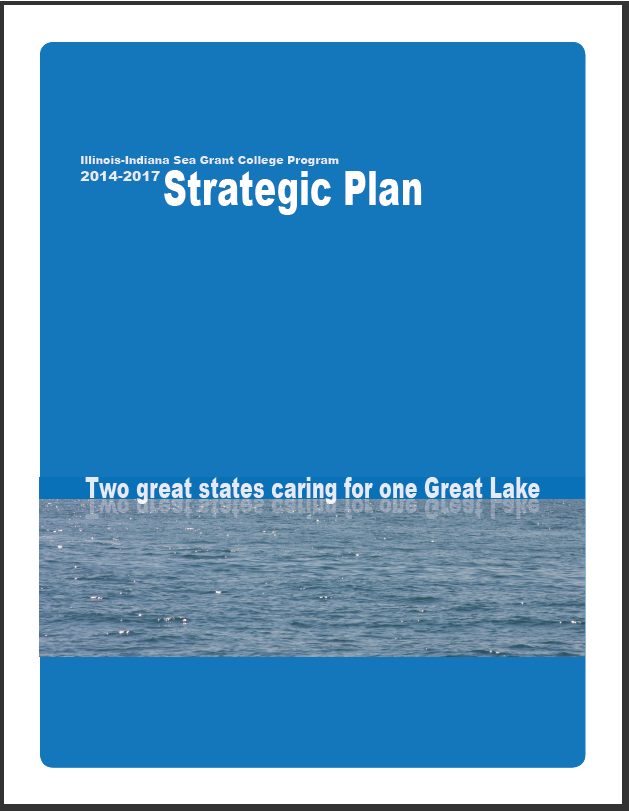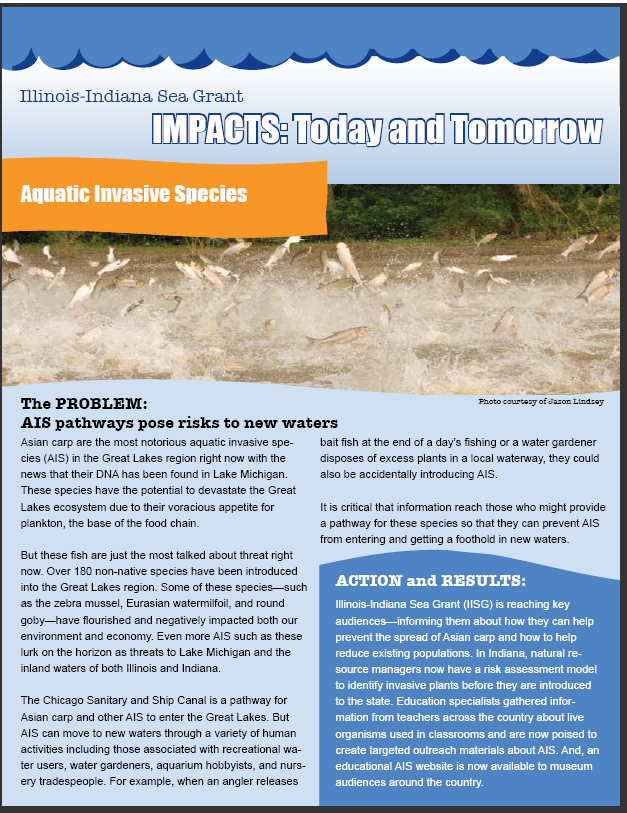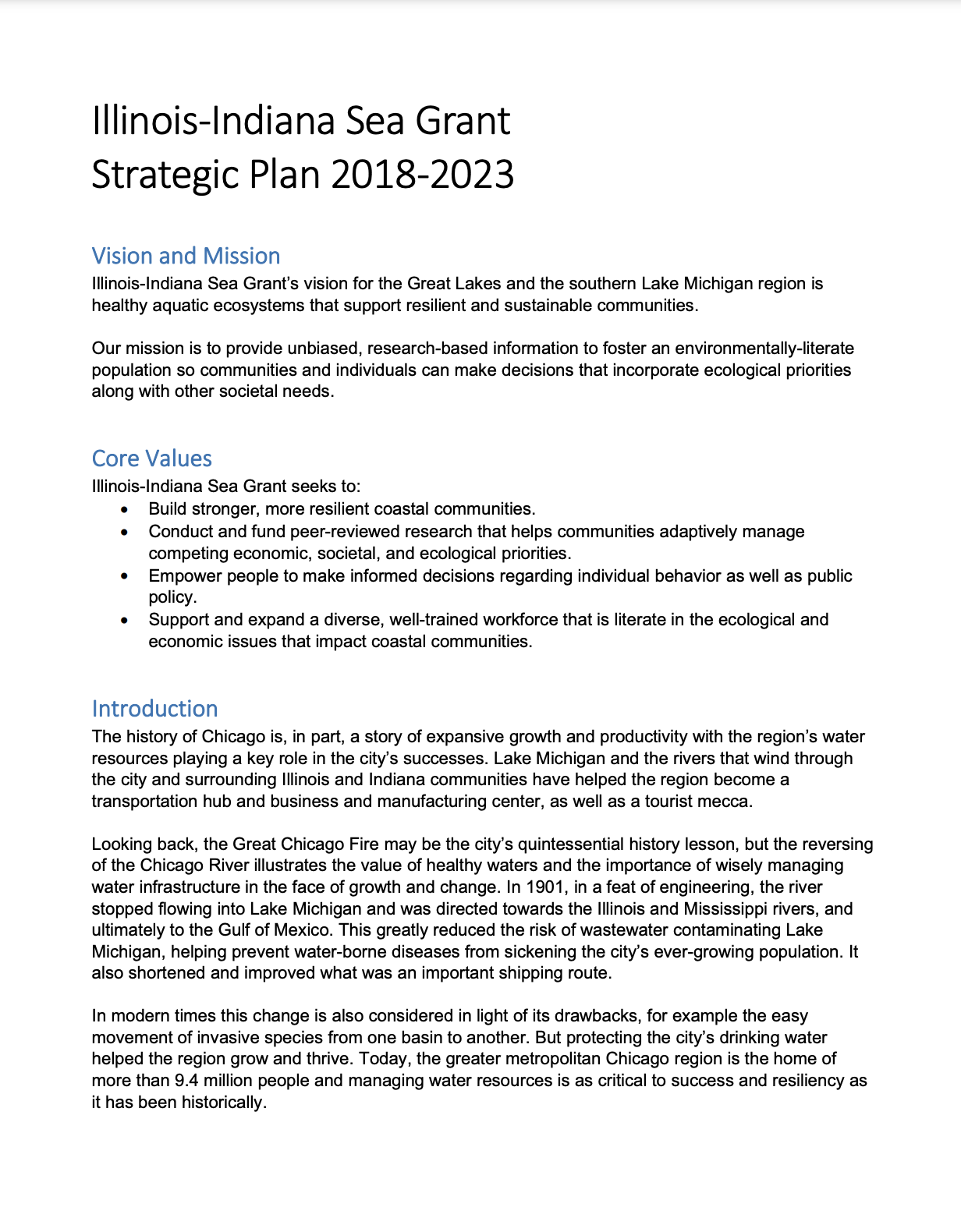
File Size: 1.07 MB
Year: 2013
Quadrennial strategic program plan for IISG which is intended to guide program by laying out mission, vision, values, principles, focus areas, goals, desired outcomes, and performance measures for the given period.

Quadrennial strategic program plan for IISG which is intended to guide program by laying out mission, vision, values, principles, focus areas, goals, desired outcomes, and performance measures for the given period.

This publication brings together program impacts from the 2018-2019 Sea Grant year.

Overview of impacts and accomplishments of AIS group.

A quarterly roundup of news stories related to the ongoing work of Illinois-Indiana Sea Grant.
In this issue:
IISG staff members win outreach and communication awards;
Graduate fellowship opportunities available;
New podcast series discusses the science of ponds;
Illinois Extension searching for assistant dean who will serve as IISG associate director
In this issue:
Indiana Master Watershed Steward volunteers dive in to help their local environment;
New toolkit makes finding weather and climate lesson plans easy;
Scientists bring the Great Lakes to students learning from home
In this issue:
Lake Michigan Chinook salmon stick with declining alewife as their main meal;
Sea Grant Faculty Scholars program provides new opportunities for researchers in Illinois and Indiana;
New feeding approach promises more robust and healthy farm-raised larval largemouth bass;
Amid COVID-19 pandemic, the need for frequent hand-washing collides with soaring water rates
In this issue:
Water affordability report helps inform new Chicago water billing policy;
Social norms help motivate people to adopt practices that protect water quality;
Purdue Extension Land Use Team launches American Citizen Planner program in Indiana;
Microplastics may increase the risk of PFAS entering the Lake Michigan food web

This strategic plan for 2018-2023 lays out IISG goals and outcomes in three National Sea Grant focus areas: Healthy Coastal Ecosystems, Resilient Communities and Economies, Sustainable Fisheries and Aquaculture, and Environmental Literacy and Workforce Development, .

This strategic plan for 2024-2027 lays out IISG goals and outcomes in four National Sea Grant focus areas: Healthy Coastal Ecosystems, Resilient Communities and Economies, Sustainable Fisheries and Aquaculture, and Environmental Literacy and Workforce Development.
Note: Some older Illinois-Indiana Sea Grant publications have not yet been restructured into ADA compliant formats. We are actively working on this. If you are having difficulty accessing a particular item in one of our databases, please contact iisg@purdue.edu with the name of the item and its URL for further assistance.